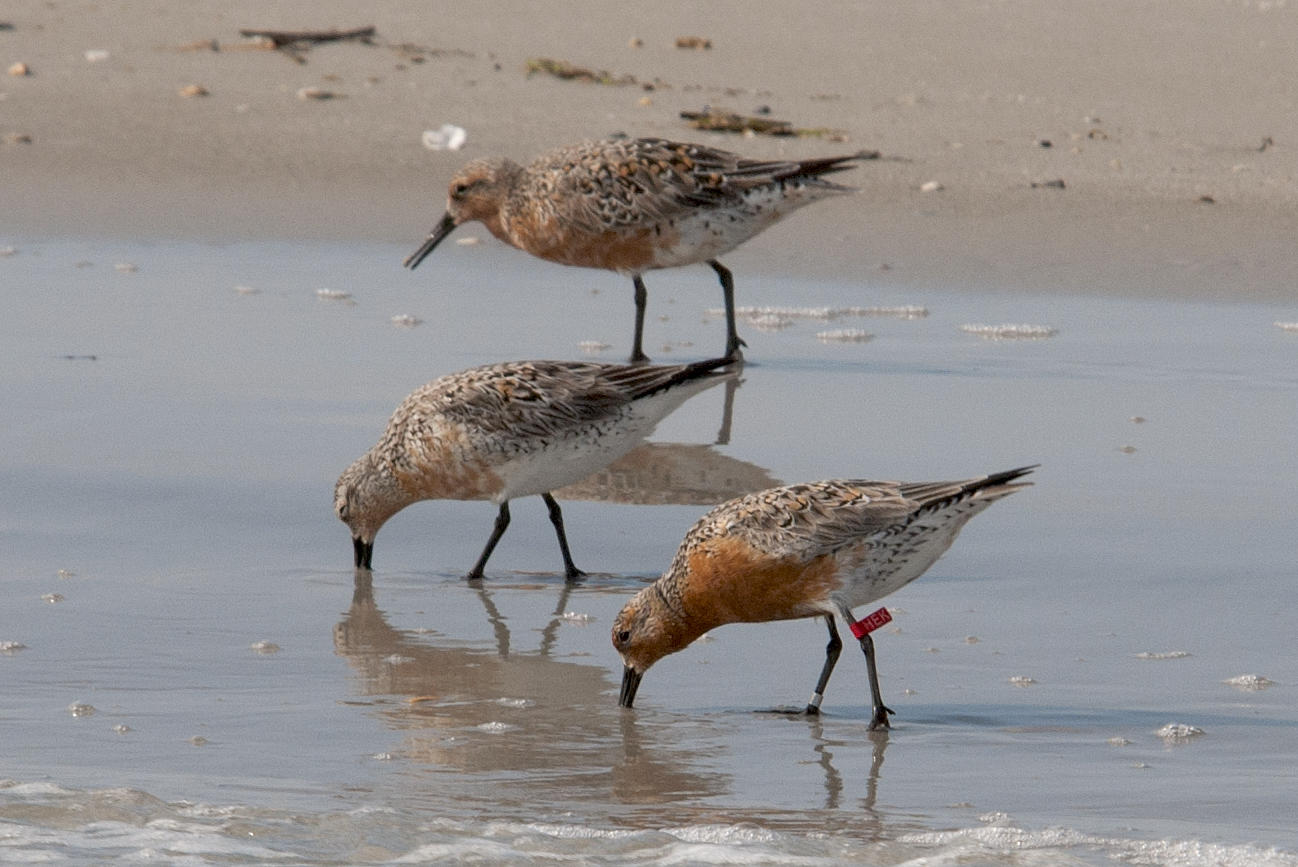Bird banding is a valuable tool in the study and conservation of many bird species. In this series, we’ll explain bird banding practices and explore insights gleaned from the observation of banded birds here on North Carolina’s coast and beyond. Now we’re looking back—to see how this important practice has evolved into what it is today.
Please welcome guest writer, Katharine Frazier.
Bird banding gives ornithologists much insight into the lives of birds, but the modern system scientists use today hasn’t been around forever. In fact, it only began to take shape in the early 1900s!
Paul Bartsch’s early work:
The use of numbered bands—a cornerstone of today’s banding system—was initiated by Paul Bartsch, a scientist who banded Black-crowned Night Herons, near Washington, DC in 1902 and 1903. Bartsch inscribed each of his bands with a serial number and a message—“Return to Smithsonian Institution.”
Later in 1903, someone reported one of Bartsch’s banded herons in Leesburg, Virginia. Bartsch’s basic system of banding birds and having people send in reports of sightings continues today in the form of websites, where citizen scientists can submit sightings for specific birds. Many of you may have even reported sightings of banded birds to these websites!
Bartsch’s work in the field of bird banding inspired others to use banding as a method of conducting serious scientific studies. In 1909, Leon Cole, an ornithologist from the University of Wisconsin, founded a national banding organization known as the American Bird Banding Association, which oversaw all banding activities in the country until 1920, when the Bureau of Biological Survey—housed in the U.S. Department of Agriculture—began to administer banding.
Frederick C. Lincoln takes over:
When the federal government took over banding activities, they chose Frederick C. Lincoln, an ornithologist from Colorado, to oversee the program. He managed the Section of Distribution and Migration of Birds within the Bureau of Biological Survey. For his work in this department, Lincoln is recognized as one of the most influential figures in the development of modern bird banding.
During his 26-year tenure, Lincoln completely transformed the basic system created by Bartsch and implemented by the American Bird Banding Association. He created fixed, uniform systems for numbering and recording banded birds, established banding standards, recruited banders from across the country and promoted banding as an important area of scientific study. As his banding program grew, Lincoln also became involved in migratory bird conservation, an issue brought to light by population data shown through records of banded birds.
His work with the Bureau of Biological Survey (and later the U.S. Fish and Wildlife Service) came to an end in 1946.

Modern Day Banding:
Today, banding is much more than the simple metal bands used by the falconers of the Middle Ages and the ornithologists of the 19th and 20th centuries.
Modern banders have progressed past bands placed around birds’ legs. With modern technologies such as radio and satellite transmitters, banders gather more information about birds’ lives than ever before.
These trackers allow scientists to study birds’ migration routes from a distance without having to rely on resighting reports. Thanks to trackers, banders reveal a more complete picture of certain birds’ migratory, nesting and even feeding patterns.
Considering banding’s beginnings as a method of conveying messages in the Punic Wars and as a way to express ownership of falcons in the Middle Ages, it’s amazing to see how far banding has come.
The practice has had an incredibly long history, and it’s certainly not over yet. As new technology continues to develop, so will banding. Who knows how scientists will be tracking birds in 20, 50 or even 100 years?
Now that you know the history of bird banding, learn how the practice supports bird conservation science.



